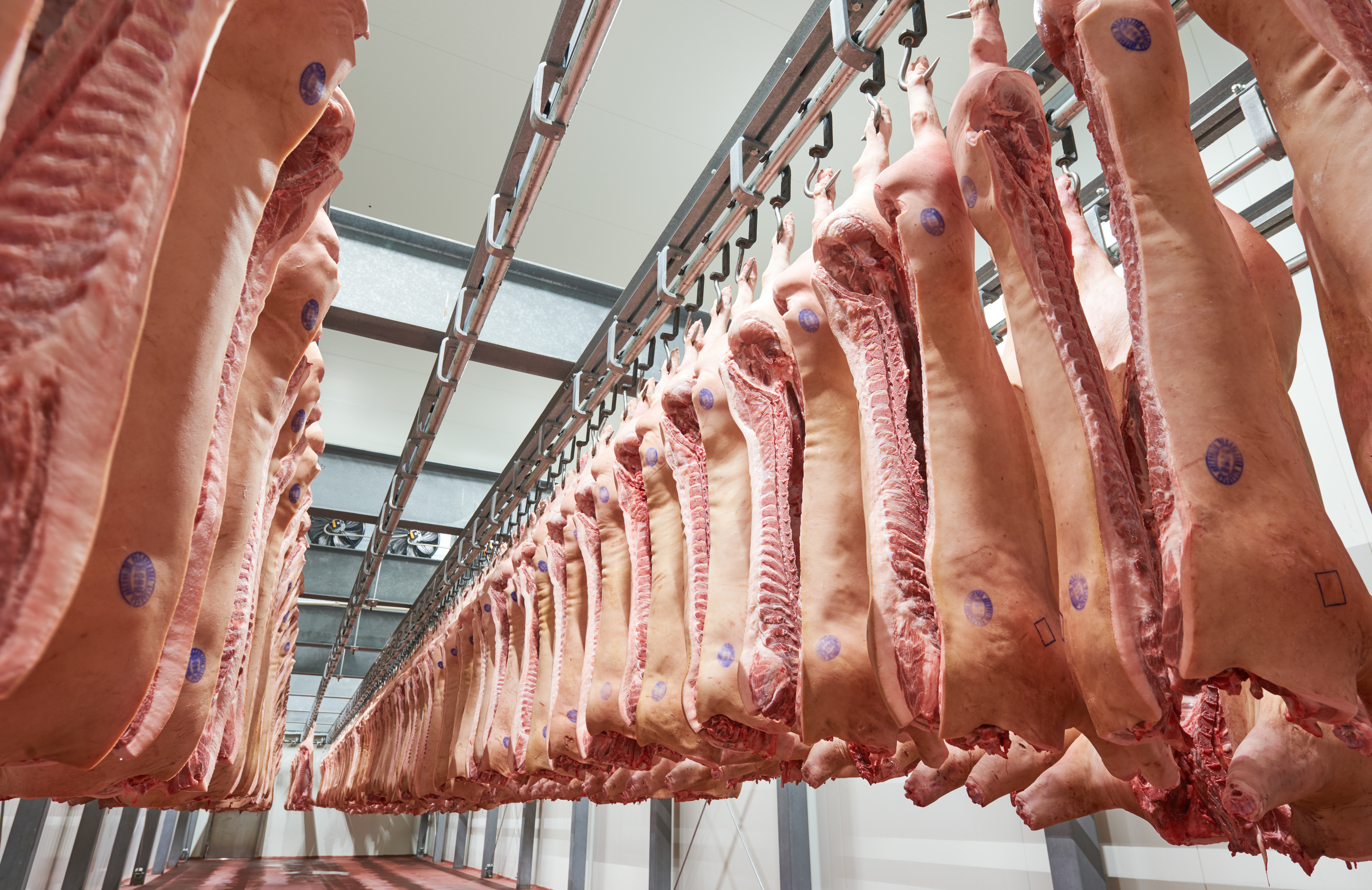



US meatpacking workers hesitant to return to work despite executive order
US meatpacking unions report that scores of employees remain off the job due to either quarantine or fears of contracting COVID-19, despite an order from President Trump mandating their return to work.Reuters reports that Smithfield Foods Inc is missing nearly one third of its employees at a South Dakota pork plant because they are quarantined or afraid to return to work after a severe coronavirus outbreak.
Tyson Foods Inc was forced to briefly close a different plant in Iowa one month after President Trump issued the 28 April executive order telling meatpackers to stay open. Reuters reports that worker absences hindered slaughter operations.


According to Mark Lauritsen, a vice president at the United Food and Commercial Workers International Union (UFCW), between 30 to 50 percent of meatpacking employees across the US were absent last week.
More than a dozen meatpacking workers, union leaders and advocates told Reuters that many employees still fear getting sick after losing confidence in management during coronavirus outbreaks in April and May. Absenteeism varies by plant, and exact data is not available, but some workers' unwillingness to return poses a challenge to an industry still struggling to restore normal meat output.
Daily pork production was down by as much as 45 percent in late April as some 20 plants closed because of outbreaks. Production has rebounded since plants reopened last month in response to Trump's order, but remains down from before the pandemic. The UFCW union, which represents about 80 percent of US pork and beef production, told Reuters that major pork plants are running at about 75 percent capacity.


Data from the USDA shows that processors slaughtered about 438,000 hogs on Friday, down 12 percent from the peak before the pandemic.
The USDA and the White House declined to comment for this story. Tyson, Smithfield and other meatpackers say they have taken extensive safety measures, at great cost, to protect workers.
Meat companies have prevented the pace of slaughter from falling further by bolstering kill lines with employees from other operations that require more labour, such as butchering and deboning. As a result, meatpackers are producing fewer products that require extra work - such as boneless hams - and throwing away items like offal that otherwise would be sold, Lauritsen said.
The cure for absenteeism is a safe job at a decent wage, Lauritsen said.
"Right now" he said, "there are employees that don't see the safe job part."
Why the virus lingers in plants
Meatpacking plants became hotbeds of infection because they host thousands of employees who work in close quarters. Cooler temperatures in the plant also let the virus persist on surfaces.
The world's biggest meat companies have spent tens of millions of dollars to protect workers by erecting physical barriers, taking workers' temperatures, providing protective gear and staggering break times. They have not been able to eliminate infections, however.
"They have changed a lot of things that I think are great," said Alejandro Murgioa-Ortiz, a community organiser who works with meatpacking workers in Iowa and Nebraska. But workers remain wary, he said, because "there's still so many risks."
Infections have risen steadily in rural counties that are home to large meatpacking plants since Trump ordered them to stay open. At least 15 meatpacking counties now report a higher infection rate, on a per capita basis, than New York City, the virus's epicentre – though that is likely a reflection of the extensive testing of workers and local residents along with elevated infection rates.
In Kansas, 2,896 meat workers have tested positive, accounting for nearly one third of all cases in the state, according to the state health department.









